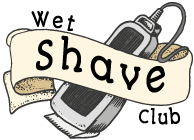How do you achieve the perfect balance between rugged masculinity and refined sophistication? The answer lies in mastering the art of trimming a short beard.
In a world where grooming plays a significant role in personal style, knowing how to sculpt and maintain a short beard can elevate your look to new heights.
From defining the neckline to shaping the cheek line, each step in the trimming process contributes to a polished and well-groomed appearance.
In this comprehensive guide, we’ll explore the step-by-step techniques and essential tips for trimming a short beard with precision and confidence.
Whether you’re a seasoned beard enthusiast or a newcomer, this guide will equip you with the knowledge and skills to achieve a stylish and well-maintained beard that complements your individuality. Stay sharp.
Benefits of a Well-trimmed Short Beard
A well-trimmed short beard can be more than just a fashion statement; it can offer a range of benefits, both practical and aesthetic. Here’s why maintaining a short beard can be advantageous:
- Enhanced Facial Structure: A short beard can help define and enhance the contours of the face, providing a more structured appearance. It can help square off the jawline or soften sharp angles, depending on the desired effect.
- Reduced Maintenance: Compared to longer beard styles, a short beard generally requires less maintenance. It’s easier to groom and style, saving time and effort in daily grooming routines.
- Professional Appearance: Short beards are often perceived as more professional than longer or unkempt styles. They can add a touch of sophistication to your look while still allowing for self-expression.
- Less Prone to Tangling and Knots: Shorter beards are less prone to tangling and knots, making them easier to manage and less likely to cause discomfort or irritation to the skin.
- Versatility: Despite their shorter length, short beards offer versatility in styling. They can be shaped and trimmed to complement different facial features or to suit various occasions, from casual outings to formal events.
- Heat Regulation: During hot weather, a short beard can help regulate body temperature by providing a buffer between the skin and the elements, without trapping excess heat like longer beard styles might.
- Youthful Appearance: In some cases, a short beard can make a person appear younger by adding a layer of maturity without aging the face excessively.
- Confidence Boost: A well-groomed beard, regardless of length, can boost confidence and self-esteem. It serves as a form of self-expression and can be a source of pride for many individuals.
A well-trimmed short beard offers a multitude of benefits, from enhancing facial features to reducing maintenance and imparting a sense of professionalism.
It’s a versatile option that allows for individual expression while still maintaining a polished appearance.
How to Trim a Short Beard: Learn In Steps
Trimming a short beard is an art that requires patience, precision, and the right tools.
Whether you’re aiming for a neat stubble or a more structured look, mastering the technique can elevate your grooming routine and enhance your overall appearance. Here’s a step-by-step guide on how to trim a short beard effectively:
Step 1: Preparation
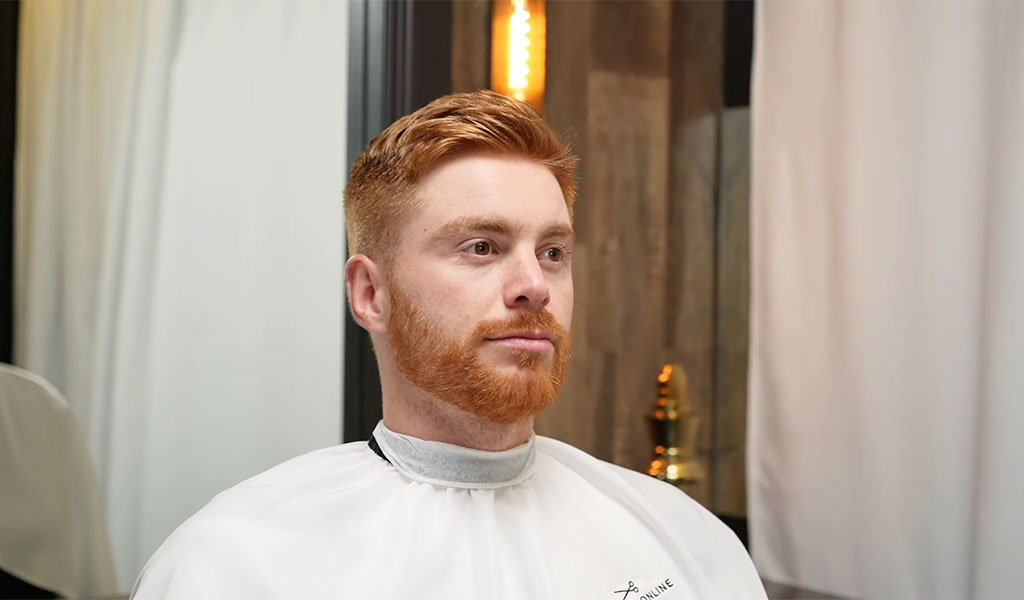
Before you begin trimming, it’s essential to prepare both your beard and your tools. Start by washing your beard with a gentle cleanser to remove any dirt, oil, or product buildup.
Pat it dry with a clean towel, ensuring it’s completely dry before proceeding. Next, gather your trimming tools, including a high-quality beard trimmer, scissors, a comb, and a handheld mirror for better visibility.
Step 2: Choose the Right Length
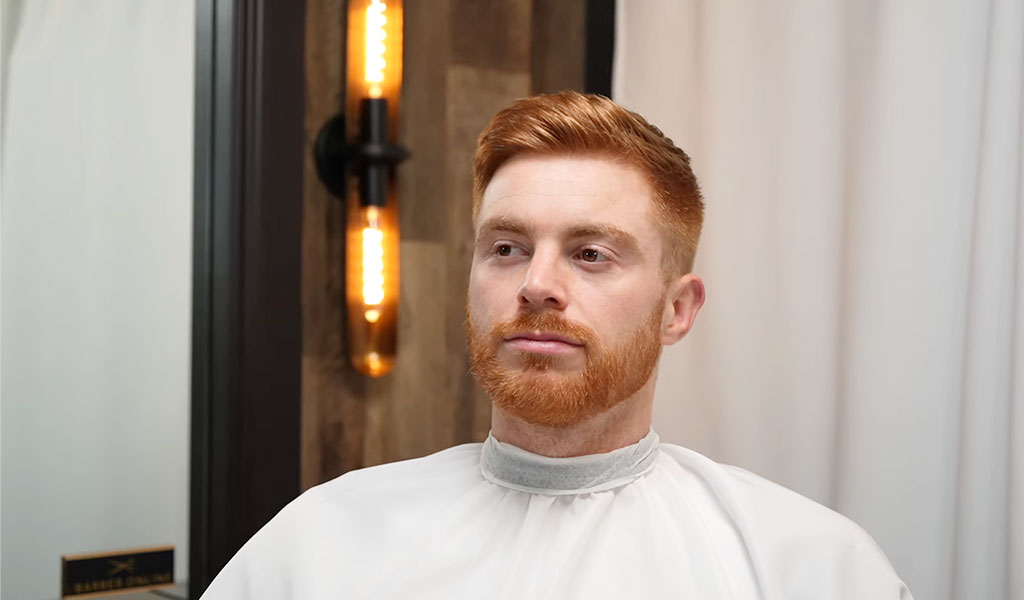
Decide on the desired length for your beard and adjust your trimmer accordingly. For a short beard, a setting between 1 and 3 millimeters is typically ideal, depending on your preference.
It’s best to start with a longer setting and gradually decrease the length as needed to avoid trimming too much at once.
Step 3: Trim the Sides
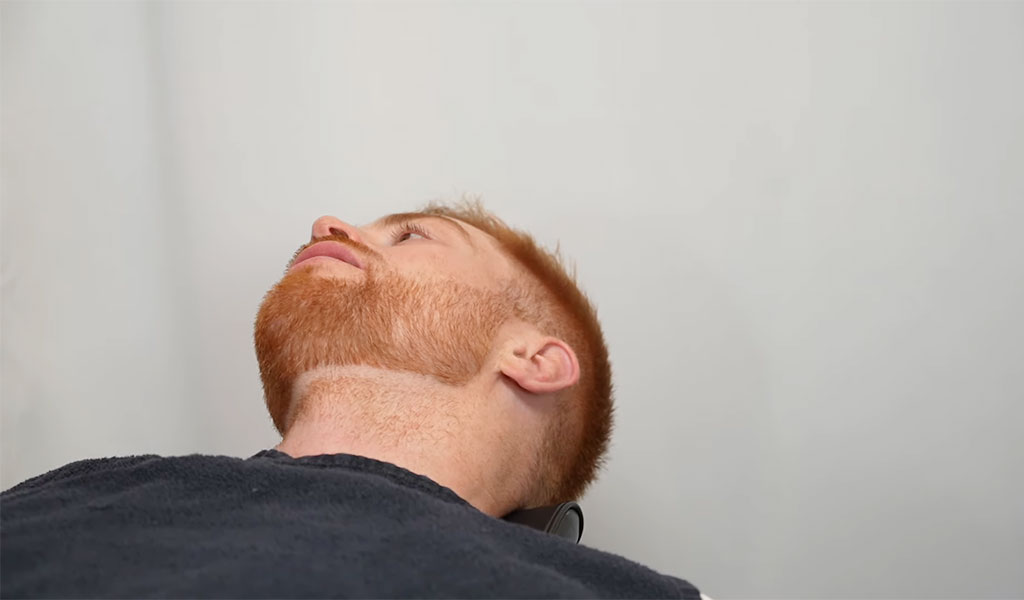
Begin by trimming the sides of your beard using an upward motion with the trimmer. Follow the natural curvature of your jawline, starting from the bottom and working your way up towards your ears.
Use short, controlled strokes to ensure an even cut and avoid creating any harsh lines or uneven patches. Pay close attention to symmetry, regularly checking both sides in the mirror to ensure consistency.
Step 4: Define the Neckline
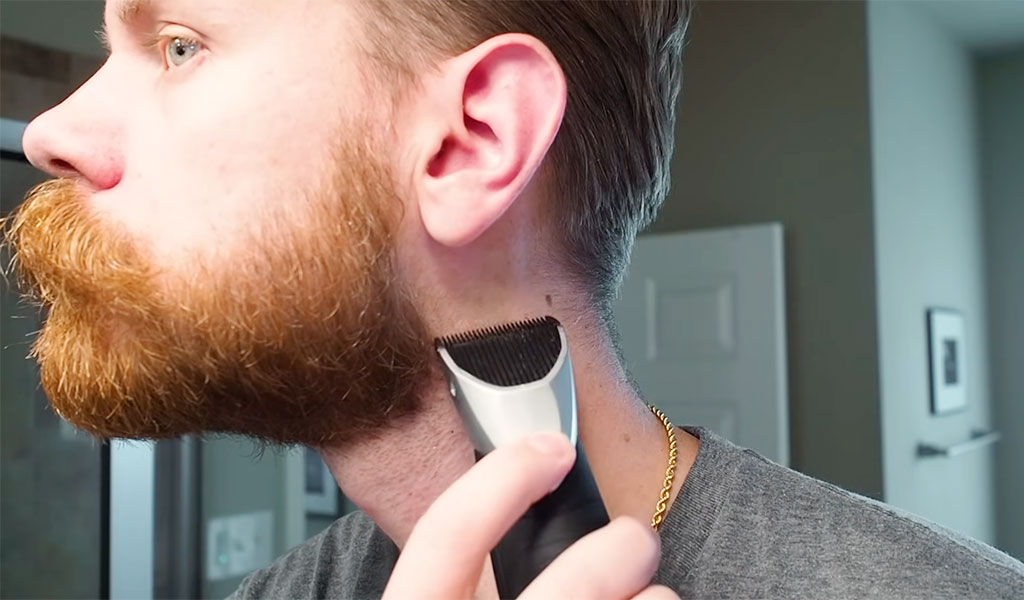
Next, define the neckline of your beard to create a clean and polished look. Using the trimmer or scissors, carefully trim any stray hairs below the jawline, creating a straight or slightly curved line from ear to ear.
Avoid cutting too high or too low, as this can disrupt the natural flow of your beard and create an unnatural appearance.
Take your time with this step, as a well-defined neckline can make a significant difference in the overall appearance of your beard.
Step 5: Shape the Cheek Line
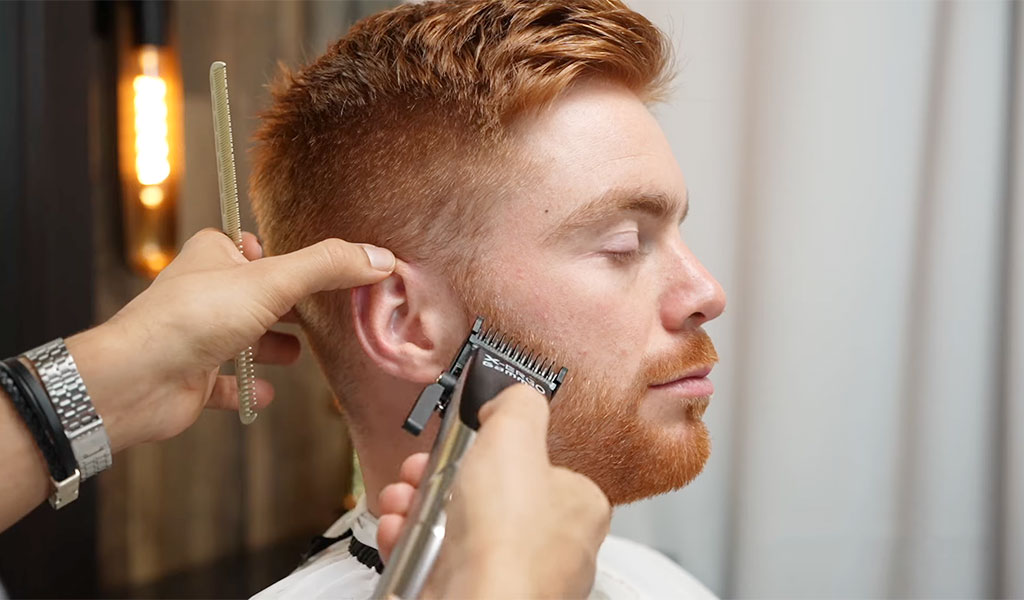
If desired, shape the cheek line of your beard to achieve a more tailored look. Using the trimmer or scissors, carefully trim any hairs that extend above your natural cheek line, following the contours of your face for a seamless transition.
Be mindful not to remove too much hair, as this can create an overly sculpted or artificial appearance. Instead, aim for a subtle and natural-looking shape that enhances your facial features.
Step 6: Trim the Mustache
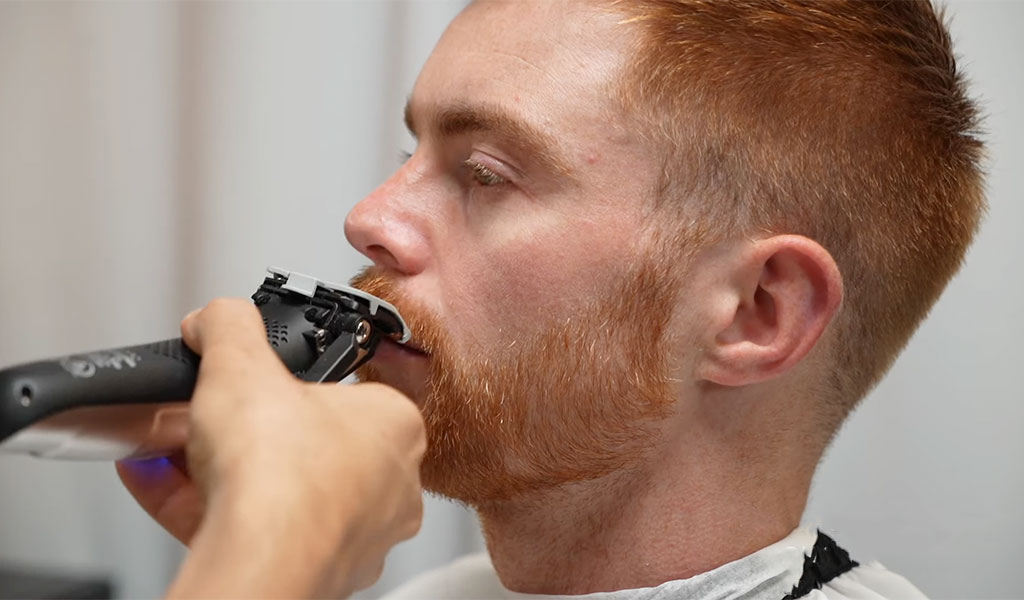
Don’t forget to give your mustache some attention during the trimming process. Comb it downwards and trim any overgrown hairs that extend beyond the lip line, using scissors for precision.
If desired, you can also trim the sides of the mustache to maintain a tidy and well-groomed appearance. Take care not to cut too much, as this can result in an uneven or sparse-looking mustache.
Step 7: Refine and Detail
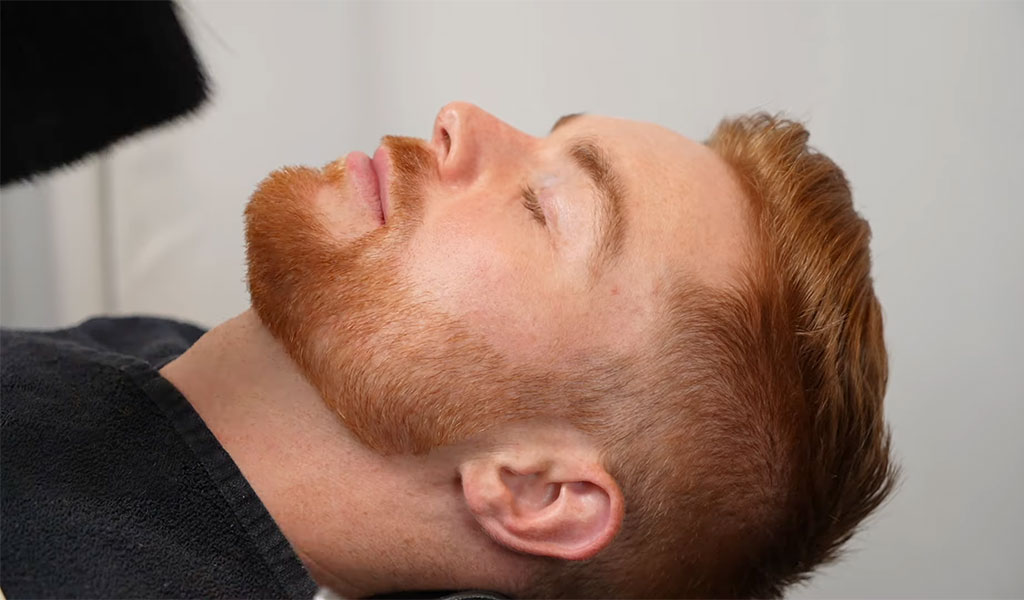
Once you’ve trimmed the main areas of your beard, take a step back and assess the overall shape and symmetry.
Use scissors or a trimmer with a smaller attachment to refine any areas that need additional attention, such as the edges or corners.
Pay close attention to detail, making minor adjustments as needed to achieve your desired look. Additionally, check for any stray hairs or uneven patches and trim them accordingly for a polished finish.
Step 8: Moisturize and Maintain
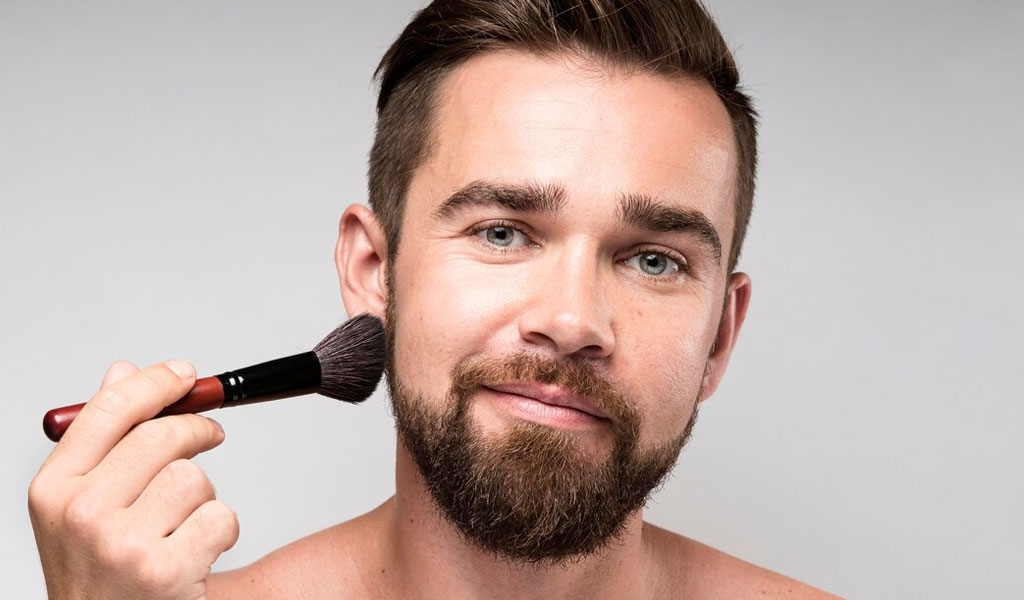
After trimming your beard, it’s essential to moisturize and maintain it regularly to keep it looking its best. Apply a nourishing beard oil or balm to hydrate the skin and soften the hair, reducing any itchiness or irritation.
Brush or comb your beard daily to distribute the product evenly and prevent tangles or knots from forming. Lastly, schedule regular touch-up trims every few weeks to keep your beard looking neat and well-maintained.
By following these steps and techniques, you can master the art of trimming a short beard and achieve a clean, well-groomed look that enhances your facial features and complements your personal style.
Aftercare Tips: Short Beard Trimming
Aftercare is crucial for maintaining the health and appearance of your freshly trimmed short beard. Proper care ensures that your beard remains soft, hydrated, and free from irritation, while also promoting healthy hair growth.
Here are some of the essential aftercare tips to keep your short beard looking its best:
Moisturize Daily
After trimming your beard, it’s essential to moisturize the skin and hair to prevent dryness and promote hydration.
Use a high-quality beard oil or balm that contains nourishing ingredients such as jojoba oil, argan oil, or shea butter.
Apply a few drops of oil or a small amount of balm to your fingertips and massage it into your beard and the skin underneath.
This will help soften the hair, reduce itchiness, and prevent flakiness, leaving your beard looking and feeling healthy.
Comb and Brush Regularly
Regularly combing and brushing your beard is essential for maintaining its shape and preventing tangles or knots from forming.
Use a beard comb or brush with natural bristles to gently detangle the hair and distribute any applied products evenly.
Start from the roots and work your way down to the tips, being careful not to pull or tug on the hair excessively. Brushing or combing your beard daily also helps stimulate blood flow to the hair follicles, promoting healthy growth.
Trim Stray Hairs
Even after a thorough trimming session, stray hairs may still appear as your beard grows out. Keep a pair of scissors or a precision trimmer on hand to trim any unruly hairs that disrupt the shape of your beard.
Pay close attention to the neckline, cheek line, and mustache area, where stray hairs are most likely to occur. Regularly checking for and trimming these hairs will help maintain a neat and well-groomed appearance.
Exfoliate Weekly
Exfoliating the skin underneath your beard is essential for removing dead skin cells, unclogging pores, and preventing ingrown hairs.
Use a gentle exfoliating scrub or brush to massage the skin in circular motions, focusing on areas where beard hair grows densely.
This will help prevent itchiness, irritation, and acne breakouts, resulting in smoother, healthier-looking skin. Exfoliate your beard area once or twice a week to maintain optimal skin health.
Avoid Overwashing
While it’s essential to keep your beard clean, overwashing can strip the hair and skin of natural oils, leading to dryness and irritation.
Limit washing your beard to 2-3 times a week, using a gentle beard shampoo or cleanser specifically formulated for facial hair.
When washing, lather the shampoo into your beard and rinse thoroughly with lukewarm water to remove any dirt, oil, or product buildup. Follow up with a conditioner or beard oil to replenish moisture and keep the hair soft and manageable.
Maintain a Healthy Lifestyle
Your overall health and lifestyle habits play a significant role in the appearance and condition of your beard. Ensure you’re staying hydrated by drinking plenty of water, as dehydration can lead to dry, brittle hair.
Eat a balanced diet rich in vitamins, minerals, and protein to support healthy hair growth and prevent nutrient deficiencies. Get regular exercise to improve blood circulation and stimulate hair follicles, promoting stronger, thicker beard growth.
Additionally, aim to get an adequate amount of sleep each night to allow your body to repair and regenerate, including your facial hair.
By following these aftercare tips, you can ensure that your short beard remains healthy, soft, and well-groomed between trimming sessions.
Incorporate these practices into your daily grooming routine to maintain a beard that looks and feels its best, enhancing your overall appearance and confidence.
How Often Should I Trim Short Beard?
The frequency of trimming your short beard depends on the rate of your hair growth and your desired style.
Generally, it’s recommended to trim your short beard every 1-2 weeks to maintain its shape and prevent it from looking unkempt.
Regular trims help keep the beard tidy by removing any stray hairs and maintaining a consistent length.
However, if you prefer a slightly longer beard or have slower hair growth, you may be able to extend the time between trims to every 2-3 weeks.
On the other hand, if you’re aiming for a very precise and structured look, you may need to trim more frequently, possibly every 1-1.5 weeks.
It’s essential to monitor the growth of your beard and trim as needed to achieve your desired style.
Pay attention to any areas that require attention, such as the neckline or cheek line, and schedule trims accordingly to keep your short beard looking its best.
Wrapping Up
Mastering the art of trimming a short beard is not only about achieving a clean and well-groomed look but also about nurturing healthy facial hair.
By following the step-by-step guide outlined in this post and incorporating proper aftercare techniques, you can maintain a beard that enhances your appearance and boosts your confidence.
Remember to start with preparation, choose the right tools, and trim with precision to achieve your desired style.
Additionally, prioritize aftercare by moisturizing, combing regularly, and maintaining a healthy lifestyle to promote optimal beard health.
With patience, practice, and attention to detail, you can confidently trim your short beard like a pro, ensuring that it remains a stylish and integral part of your personal grooming routine. Thank you very much.
